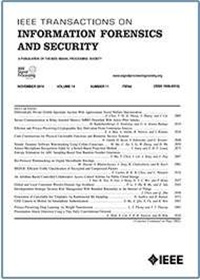动态深度四维分析恶意软件检测
IF 8
1区 计算机科学
Q1 COMPUTER SCIENCE, THEORY & METHODS
IEEE Transactions on Information Forensics and Security
Pub Date : 2025-01-17
DOI:10.1109/TIFS.2025.3531230
引用次数: 0
摘要
在计算设备无处不在的时代,恶意软件是网络攻击的主要武器,与恶意软件相关的安全漏洞仍然是一个重大的安全问题。如今,与过去相比,攻击者需要更少的资源来利用现代恶意有效载荷和人工智能工具来利用系统。尽管恶意软件防御研究取得了许多进展,但攻击者不断使用复杂的工具和技术来逃避现有的防御机制并制造混乱。此外,识别这些具有浅层特征(如节名、熵、虚拟大小和字符串)的恶意二进制文件是一项挑战,这些特征并不健壮。建议的工作主要集中在识别健壮的特征,可以帮助有效地检测更复杂的(i)见过的和(ii)从未见过的恶意软件。与现有的研究工作不同,$D^{2}4D$集中于四种类型的分析:注册表键,API功能,网络和内存分析。最重要的是,$D^{2}4D$识别执行快速流量攻击,基于dga的攻击,同义字攻击和其他攻击类型的二进制文件。评估结果表明,$D^{2}4D$的准确率达到99.67%,对见过的二进制文件的假阳性率为0.10%,对从未见过的二进制文件的准确率超过91%。除此之外,它的性能优于现有的33种反恶意软件。基于实验分析、与最先进模型的比较以及消融研究,所提取的特征在识别见过和从未见过的双星方面证明了其鲁棒性。本文章由计算机程序翻译,如有差异,请以英文原文为准。
D24D: Dynamic Deep 4-Dimensional Analysis for Malware Detection
In the era of ubiquitous computing devices, malware is the primary weapon of cyber attacks, and malware-related security breaches remain a significant security concern. Nowadays, adversaries require fewer resources to exploit a system with the help of contemporary malicious payloads and AI tools than in the old days. Despite many advances in malware defense research, adversaries continually employ sophisticated tools and techniques to evade existing defense mechanisms and create chaos. Moreover, it is challenging to recognize these malicious binaries with shallow features such as section names, entropies, virtual sizes, and strings, which are not robust. The proposed work mainly focuses on identifying robust features that can help to detect more sophisticated (i) seen and (ii) never-seen-before malware effectively. Unlike the existing research works, $D^{2}4D$ concentrates on four types of analysis: Registry key, API function, network, and memory analysis. Above all, $D^{2}4D$ identifies the binaries that perform fast-flux attacks, DGA-based attacks, homoglyphs attacks, and other attack types. The evaluation results indicate that the $D^{2}4D$ achieves an accuracy of 99.67%, with a 0.10% False Positive Rate for seen binaries and more than 91% accuracy for never-seen-before binaries. Beyond that, $D^{2}4D$ outperforms 33 existing anti-malware. The extracted features prove robust in identifying seen and never-seen-before binaries based on the experimental analysis, comparison with the state-of-the-art models, and ablation study.
求助全文
通过发布文献求助,成功后即可免费获取论文全文。
去求助
来源期刊

IEEE Transactions on Information Forensics and Security
工程技术-工程:电子与电气
CiteScore
14.40
自引率
7.40%
发文量
234
审稿时长
6.5 months
期刊介绍:
The IEEE Transactions on Information Forensics and Security covers the sciences, technologies, and applications relating to information forensics, information security, biometrics, surveillance and systems applications that incorporate these features
 求助内容:
求助内容: 应助结果提醒方式:
应助结果提醒方式:


